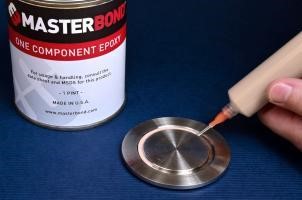Metal bonding basics
The qualities of metals can be advantages or problems; they expand and contract with temperature, can be hard yet malleable or even flexible, they conduct electricity, they can be chemically resistant or highly reactive. With so many properties, bonding them together can be a challenge: should the bond be rigid or flexible? Should it be permanent or possible to dissemble? Will it be subjected to shock, shear, water or chemicals? Should it conduct or insulate? Of course you don’t have to worry about conductivity when it comes to Plastic Moulding in manufacturing when making your products. For a business that knows all about this subject and can help with all your component needs you could check out sites like https://www.meadex.co.uk/plastic-moulding-uk.

For a specific task, a metal bonding adhesive may require a very specific combination of qualities. Consequently many are highly specialised… and highly expensive.
For most situations however, an all-round adhesive that provides strong resistant bonds is all that is needed. Metal bonding adhesive has the potential to revolutionise manufacturing and slash costs compared to welding, soldering and riveting. Disadvantages of welding are explained here: https://www.azom.com/article.aspx?ArticleID=2489.
The options
Although they have powerful adhesion, two component epoxies are inflexible and somewhat brittle. Mechanical shock or metal expansion can cause a catastrophic failure.
They are safer over larger surfaces, but another disadvantage is then encountered. Because they are prepared fresh and set quickly it can be difficult to cover the surface and still have a uniform cure rate. If the curing is slowed down, clamping is needed and production delayed.
Alternative adhesives may include polyurethanes and acrylic derivatives, but they have limited applications. Silicone adhesives are often too flexible, and neoprene contact adhesives do not allow re-positioning.

A recent breakthrough has been with silane-terminated polymers derived from sealant compounds. These tick nearly all the boxes – with good pot life, fast curing, optimal flexibility, repositioning, chemical resistance, and adhesion to all metal and other substrates.
Surface preparation
Some degree of surface pre-treatment of metals is always sensible. As well as dust and grease, most metals acquire a coating of oxides and salts when exposed to air. Adhesives that adhere to metal may not adhere to its oxide. Some oxides that adhere well to adhesive may not to their underlying metal. Either interface is a potential failure point.
The degree of surface preparation needed depends on the metal, adhesive and application. Wiping with cleaning fluids (e.g. isopropanol or acetone) is often sufficient. In other cases abrasion (or sand blasting) is needed. Chemical stabilisers (like phosphoric acid) are also effective and readily available.
